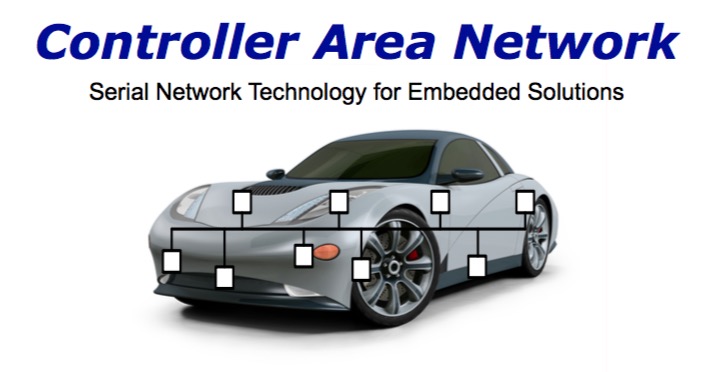Recent Posts
Controller Area Network (CAN Bus) - Serial Network Technology For Embedded Systems
Posted by on
Controller Area Network (CAN) is a serial network technology that was originally designed for the automotive industry, especially for European cars, but has also become a popular bus in industrial automation as well as other applications. The CAN bus is primarily used in embedded systems, and as its name implies, is a network technology that provides fast communication among microcontrollers up to real-time requirements, eliminating the need for other, more expensive and complex technologies.
CAN networks can be used as an embedded communication system for microcontrollers as well as an open communication system for intelligent devices. Some users, for example in the field of medical engineering, opted for CAN because they have to meet particularly stringent safety requirements.
Similar requirements had to be considered by manufacturers of other equipment with very high safety or reliability requirements (e.g. robots, lifts and transportation systems).
I used the following presentation for seminars during RTECC (Real Time Embedded Computing Conference) events all over the United States and Canada. It explains in detail the CAN protocol features with references to applications and development plus the use of higher layer protocols such as CANopen, DeviceNet, and SAE J1939. All content is based on my book A Comprehensible Guide to Controller Area Network.
Table of Content
- Controller Area Network
- CAN Bus Literature
- What is CAN Bus - General Aspects
- What is CAN Bus - Technical Aspects
- A Brief History of CAN Bus
- A Brief History of CAN Bus - Continued
- CAN Bus Applications
- CiA - CAN in Automation
- CAN Bus Main Characteristics
- Benefits of Using CAN Bus
- Message Frames
- Remote Transmission Request
- Message Broadcasting with Data Frames
- Message Request with Remote Frames - 1
- Message Request with Remote Frames - 2
- Message Frame Format - 1
- Message Frame Format - 2
- Extended CAN Bus Protocol
- Dominant/Recessive Bus Level
- Bit Monitoring
- Bus Arbitration Principle - 1
- Bus Arbitration Principle - 2
- Bus Arbitration Principle - 3
- Data Transfer Synchronization - 1
- Data Transfer Synchronization - 2
- Data Transfer Synchronization - 3
- Bit Stuffing Range
- Frame Length Due to Bit Stuffing
- Bit Monitoring - 1
- Bit Monitoring - 2
- Hard Synchronization
- Bit Synchronization
- Phase Errors
- Compensation of Phase Errors
- Error Detection Method
- Error Detection Analysis
- Error Detection
- Error Frame Superpositioning
- Fault Confinement - 1
- Transmit / Receive Errors
- Fault Confinement - 2
- CAN Bus Medium
- CAN Bus Topology
- CAN Bus Level - 1
- CAN Bus Level - 2
- CAN Bus Connection
- Maximum Bus Length
- Wiring And Connections
- CAN Bus Controller Chips - 1
- CAN Bus Controller Chips - 2
- CAN Bus Higher Layer Protocols - 1
- CAN Bus Higher Layer Protocols - 2
- More Info on CAN Bus
- Literature
=> Download/View Controller Area Network - Serial Network Technology for Embedded Solutions (PDF)...
 Loading... Please wait...
Loading... Please wait...

